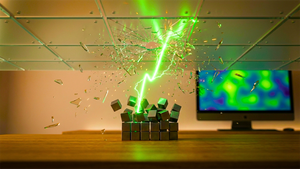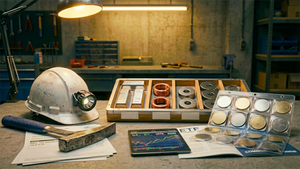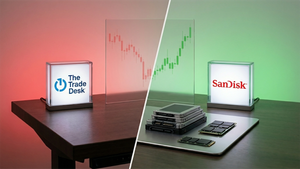How to optimize laser cutting for fabric?
CO2 Laser Cutting in Fashion and Textiles: A Revolutionary Approach
Have you ever thought about how advanced technology is transforming the fashion and textile sectors? CO2 laser cutting stands at the leading edge of this revolution, delivering exceptional precision, efficiency, and innovative possibilities. In this overview, we’ll examine the various applications of CO2 laser cutting within the fashion and textile industries, covering everything from detailed designs to large-scale manufacturing. By the conclusion, you'll grasp how this technology is influencing the future of the industry and how to use it for your own projects.
Mastering laser cutting settings for fabric requires a balance of precision and experimentation. Start by testing on scrap material to determine the ideal power, speed, and frequency settings. Lower power and higher speed often work best for delicate fabrics, while thicker materials may require adjustments. Always consider the fabric type, as synthetic materials like polyester behave differently than natural fibers like cotton. By fine-tuning these settings, you can achieve clean, precise cuts without fraying or burning.
https://www.mimowork.com/laser/laser-cutting-fabric-setting-guide
Why CO2 Laser Cutting is Perfect for Fashion and Textiles
CO2 laser cutting utilizes a powerful laser beam to cut, engrave, or etch materials with remarkable accuracy. This technology provides several key advantages for fashion and textiles:
Precision: Create intricate designs and sharp edges that traditional methods can’t achieve.
Speed: Quickly cut through multiple layers of fabric, significantly shortening production times.
Versatility: Compatible with a wide array of materials, from delicate silks to sturdy leathers.
Automation: Works seamlessly with CAD software for scalable and repeatable production processes.
Eco-Friendly: Minimizes material waste and removes the need for additional edge-finishing techniques.
Key Uses in Fashion and Textiles
Custom Clothing Design
CO2 laser cutting enables designers to craft intricate patterns on garments. Whether it’s delicate lacework on bridal attire or striking geometric designs on casual wear, the opportunities are limitless.
Fabric Alteration
The laser can engrave or etch designs into fabric, producing textured patterns without cutting through the material. This technique is popular in applications such as denim, leather jackets, and decorative textiles.
Accessories and Details
Laser cutting is ideal for creating finely detailed accessories, including belts, bags, and shoes, as well as appliqués and embellishments for clothing.
Technical Fabrics
In sectors like automotive and aerospace, CO2 lasers are employed to accurately cut technical materials for applications such as seat covers, airbags, and insulation.
Home Textiles
From beautifully designed curtains to precisely cut upholstery, CO2 laser cutting ensures accuracy and uniformity in home decor projects.
Sustainable Fashion
By reducing waste and enhancing production efficiency, CO2 laser cutting fosters sustainable fashion practices. Designers can develop zero-waste patterns and repurpose fabric remnants into new creations.
How to optimize laser cutting for fabric? Begin by understanding your machine’s capabilities and the fabric’s properties. Test small sections with varying power and speed settings to identify the sweet spot. For intricate designs, use higher speed and lower power to prevent scorching. Don’t forget to account for ventilation to minimize smoke and residue. With practice, you’ll discover the perfect settings for flawless results every time.
https://www.mimowork.com/laser/how-laser-cut-fabric-without-fraying
Real-World Examples
High Fashion: Designers like Iris van Herpen and Alexander McQueen have embraced laser cutting to produce avant-garde pieces that redefine traditional fashion boundaries.
Mass Production: Brands such as Nike and Adidas utilize laser cutting for the precise and efficient production of athletic apparel.
Independent Designers: Smaller-scale designers leverage laser cutting technology to create unique, limited-edition items that capture consumer interest.
Now that you’re familiar with the extensive applications of CO2 laser cutting in the fashion and textile space, let’s discuss practical tips for integrating this technology into your workflow.
Practical Tips for CO2 Laser Cutting in Fashion and Textiles
Select the Right Fabric
Different fabrics react differently to laser cutting. Natural fibers like cotton and silk are typically ideal, while synthetic materials like polyester may require specific settings to prevent melting or discoloration.
Optimize Laser Settings
Power: Use lower power settings for delicate fabrics and higher settings for thicker materials.
Speed: Adjust the speed to balance accuracy and efficiency.
Focus: Ensure the laser is correctly focused for optimal cutting results.
Use Vector Files for Design
Create your designs in vector format (such as SVG or DXF) to ensure precise cutting paths, as most laser cutting software supports these file types.
Conduct Test Cuts
Always test on a scrap piece of fabric to find the best settings and avoid damaging your final work.
Ensure Adequate Ventilation
Laser cutting can produce fumes, especially from synthetic fabrics. Use an exhaust system or work in a well-ventilated area.
Maintain Your Equipment
Regular cleaning of the laser lens and mirrors is essential for consistent performance and extending the machine's lifespan.
Conclusion
CO2 laser cutting is transforming the fashion and textile industry by providing unparalleled precision, versatility, and efficiency. From personalized clothing to sustainable production techniques, this technology is paving the way for the future of design and manufacturing. By understanding its diverse applications and following best practices, you can fully harness its potential for your creative endeavors.
Are you ready to step into the future of fashion and textiles? Begin exploring CO2 laser cutting today and discover how it can enhance your creative journey!
Media Contact
Company Name: Mimowork
Email: Send Email
Country: China
Website: https://www.mimowork.com/
More News
View More



Recent Quotes
View MoreQuotes delayed at least 20 minutes.
By accessing this page, you agree to the Privacy Policy and Terms Of Service.